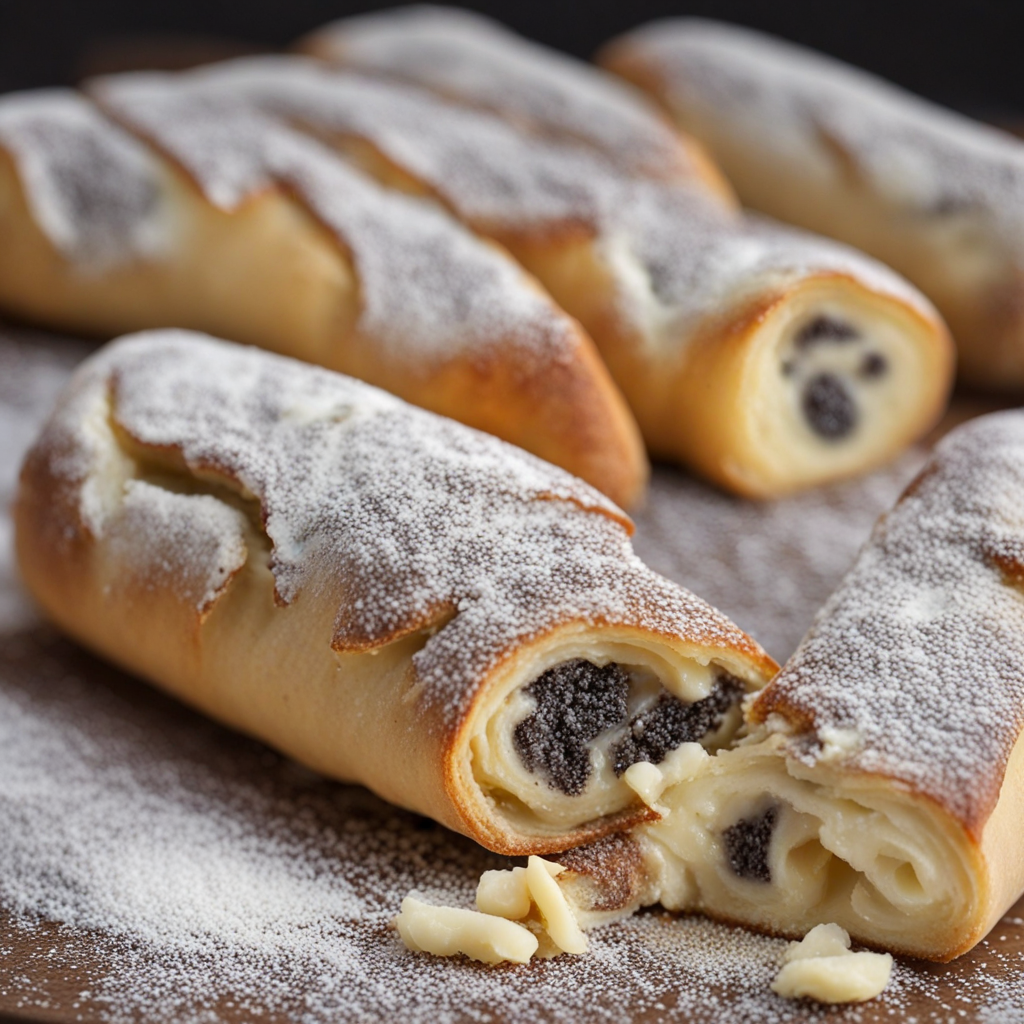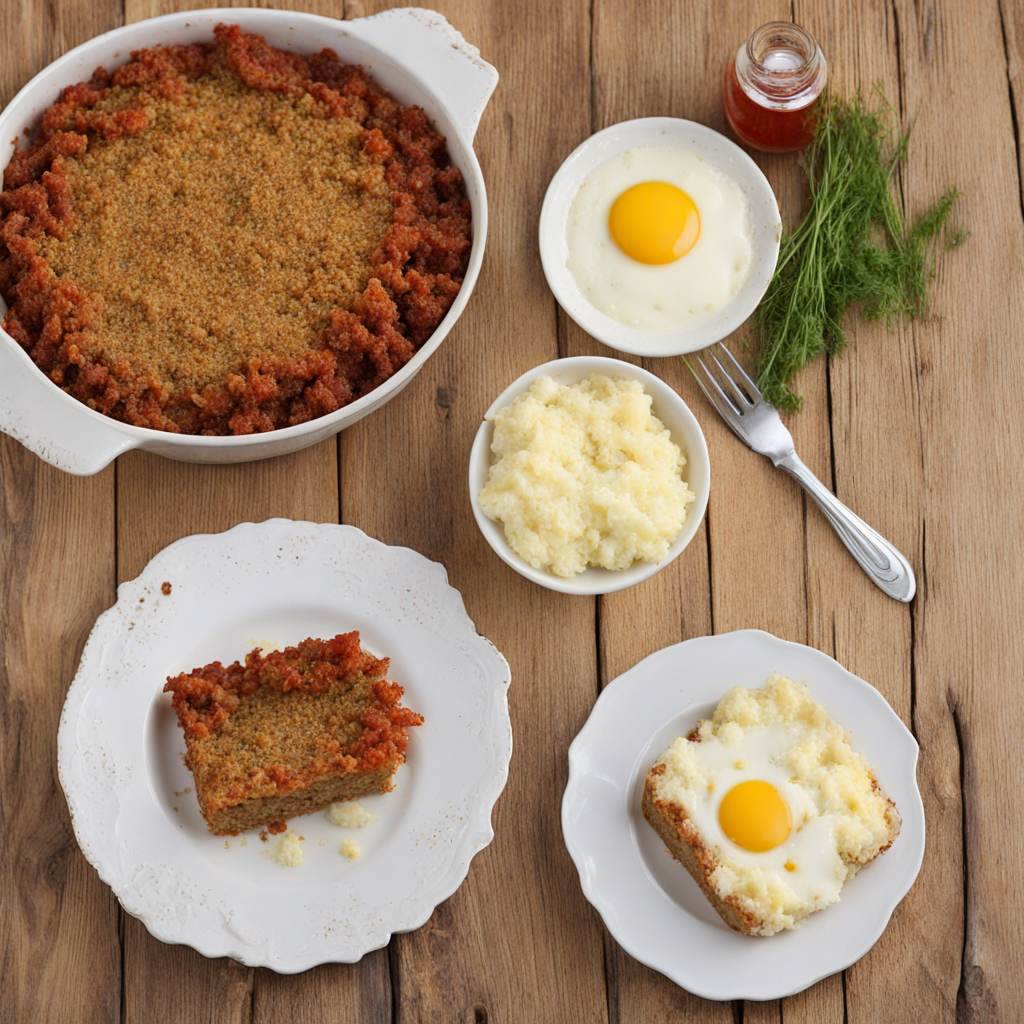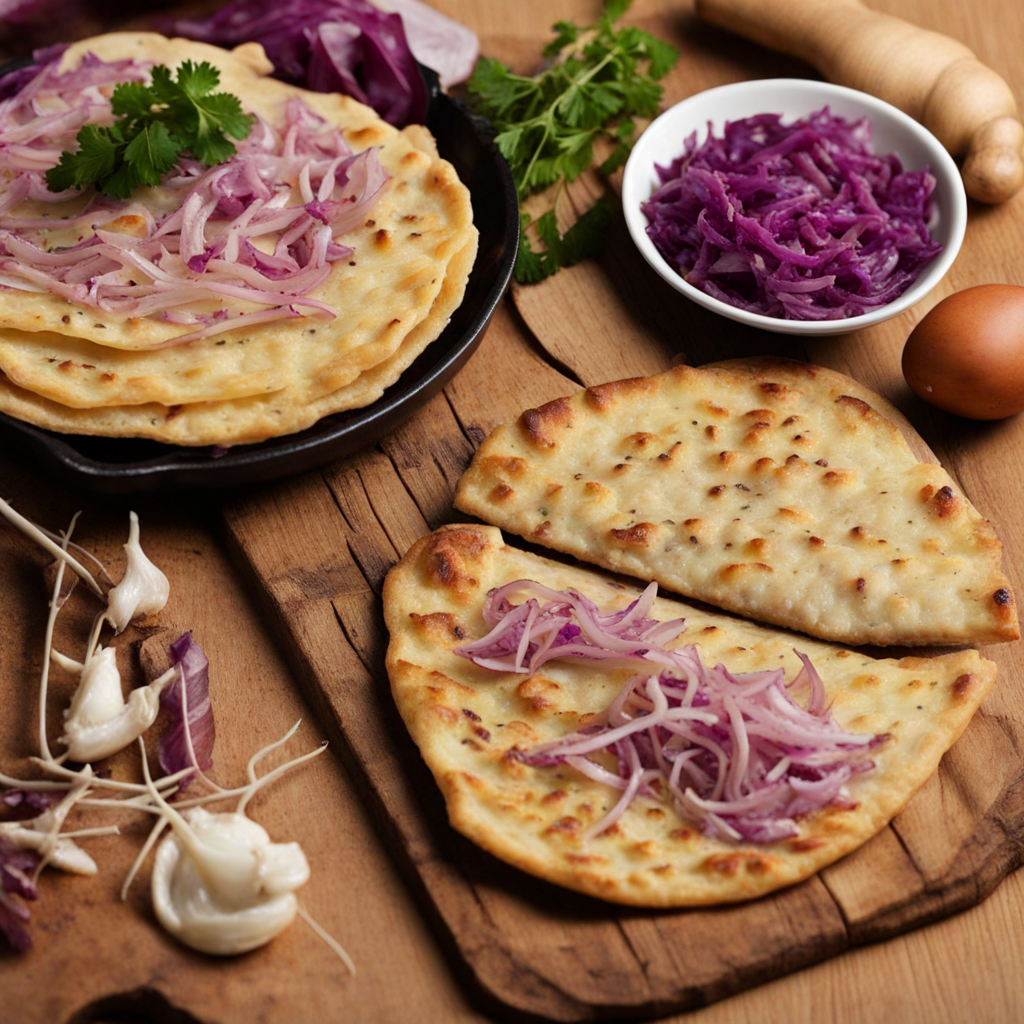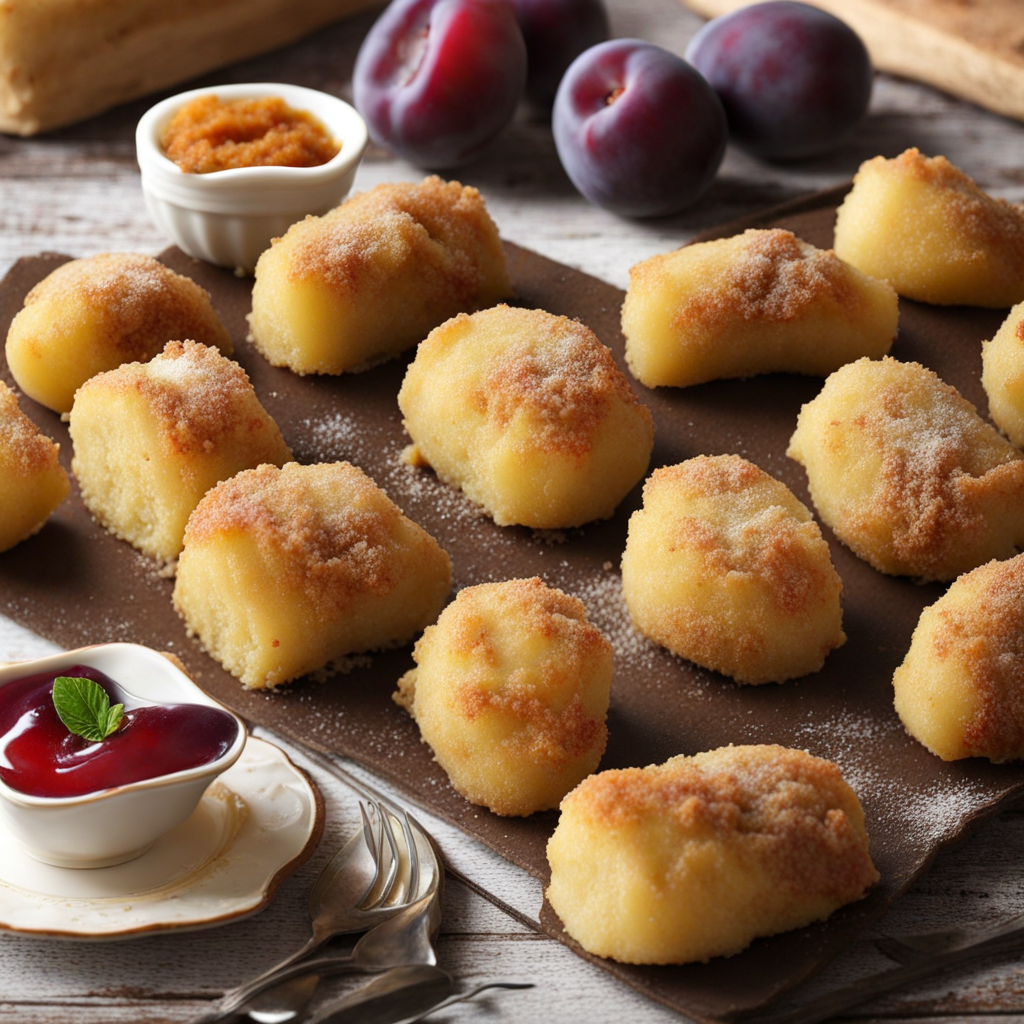Šulance
Šulance is a delightful traditional Slovak dish that captures the essence of rustic comfort food. These soft, pillowy dumplings are typically made from a simple dough of flour, eggs, and water, which is rolled out and cut into small pieces. The dough is then filled with a variety of sweet or savory ingredients, often including cottage cheese, potatoes, or fruit, making each bite a unique experience. The preparation involves boiling the dumplings until they float to the surface, indicating they are perfectly cooked and ready to be enjoyed. Once cooked, Šulance can be served with a range of accompaniments that elevate their flavors. A popular choice is to drizzle them with melted butter and sprinkle a generous amount of sugar and ground poppy seeds or breadcrumbs on top for a sweet finish. Alternatively, they can be enjoyed savory, topped with sautéed onions or bacon, providing a delightful contrast to the dumpling's softness. This versatility makes Šulance a beloved dish in Slovak cuisine, suitable for both hearty meals and indulgent desserts. The taste of Šulance is a harmonious blend of textures and flavors. The dumplings themselves are light and airy, offering a gentle chew that pairs beautifully with their fillings. When prepared with sweet ingredients, they present a comforting warmth that brings to mind childhood memories of home-cooked meals. On the other hand, the savory versions provide a satisfying umami experience. Whether you choose to enjoy them sweet or savory, Šulance promises a taste of Slovakia that is both authentic and deeply satisfying.
How It Became This Dish
The History of Šulance: Slovakia's Beloved Dumplings Origins: A Culinary Tradition Rooted in Agriculture Šulance, a traditional Slovak dish, embodies the rich agricultural heritage of Slovakia. These delightful dumplings, often filled with sweet or savory ingredients, trace their origins back to the rural communities of the Slovak countryside. The word "šulance" is derived from the Slovak word for “roll” or “to roll,” aptly describing their shape. The roots of šulance can be traced to the late Middle Ages when the cultivation of potatoes and other staple crops became prevalent in the region. Potatoes, which were introduced to Europe from the Americas in the late 16th century, quickly adapted to the climate and soil of Slovakia. This agricultural shift allowed for the emergence of dishes that utilized these versatile tubers. Šulance, made primarily from a dough of potatoes or flour, became an integral part of the peasant diet, providing sustenance and comfort. Cultural Significance: A Symbol of Slovak Identity Šulance holds a special place in the heart of Slovak culture. Much more than a mere dish, it represents the connection between the land, tradition, and family. In Slovakia, food is a crucial part of social gatherings, celebrations, and rituals. Šulance is often prepared for family gatherings, festive occasions, and during the harvest season, symbolizing prosperity and the bounty of the land. The dish is particularly significant during Easter, a time for families to come together and celebrate the arrival of spring. Traditional Slovak Easter feasts often feature šulance, showcasing the dish's importance in seasonal celebrations. The preparation of šulance often involves family members working together, reinforcing community bonds and passing down culinary techniques from generation to generation. Development Over Time: From Rural Roots to Culinary Diversity As Slovakia evolved through the centuries, so too did šulance. The dish remained primarily a peasant food until the 19th century, when it began to gain popularity among various social classes. The rise of the middle class during the Austro-Hungarian Empire introduced new culinary influences, as people traveled and exchanged recipes. This period marked the beginning of a culinary renaissance in Slovakia, with šulance adapting to new tastes and preferences. Different regions of Slovakia have their unique takes on šulance, showcasing the diversity of Slovak culinary traditions. In some areas, the dumplings are filled with sweet ingredients, such as fruit, sugar, or poppy seeds, while in others, they are stuffed with savory fillings like cheese, sauerkraut, or meat. The sweet version, often served with a dusting of powdered sugar and a drizzle of melted butter, has become particularly popular as a dessert, while the savory variation is often served as a hearty main course. The industrialization of Slovakia in the 20th century brought about significant changes in food production and consumption. With the advent of modern conveniences, the preparation of traditional dishes like šulance became less labor-intensive. However, these changes also led to concerns over the preservation of traditional culinary practices. As globalization took hold in the late 20th century, Slovak cuisine faced competition from international fast food and dining trends. Despite these pressures, šulance endured and even thrived. The late 20th and early 21st centuries saw a revival of interest in traditional Slovak foods, as chefs and home cooks alike sought to reconnect with their culinary heritage. This movement was fueled by a growing appreciation for local ingredients and a desire for authenticity in the face of globalization. Modern Interpretations: Šulance in Contemporary Cuisine Today, šulance continues to be a beloved dish in Slovakia, enjoyed by people of all ages. It is often featured in Slovak restaurants and is a staple of traditional Slovak cookbooks. Chefs across the country have embraced the dish, experimenting with new fillings and presentation styles while respecting its traditional roots. Contemporary interpretations of šulance can be found at food festivals and culinary events, where chefs showcase their innovative takes on this classic dish. Some have begun to incorporate fusion elements, such as international spices or modern cooking techniques, while still honoring the essence of šulance. These adaptations not only celebrate Slovakia's culinary heritage but also demonstrate its ability to evolve and remain relevant in today’s diverse food landscape. Moreover, the rise of food tourism in Slovakia has brought increased visibility to traditional dishes like šulance. Travelers seeking authentic experiences often seek out local restaurants and cuisine, prompting chefs to highlight their national dishes on their menus. This exposure has allowed šulance to reach a broader audience, introducing its unique flavors and textures to food enthusiasts around the world. Conclusion: A Dish That Unites Generations Šulance is more than just a dish; it is a cultural artifact that tells the story of Slovakia's agricultural heritage, social customs, and culinary evolution. From its humble beginnings in rural kitchens to its place on contemporary restaurant menus, šulance reflects the resilience and adaptability of Slovak cuisine. As families gather around the table to enjoy this beloved dumpling, they are not only savoring a delicious meal but also participating in a rich tapestry of history and tradition. The act of making šulance continues to serve as a bridge between generations, ensuring that the stories, flavors, and techniques of the past are not lost but rather celebrated and carried forward into the future. In a world that is constantly changing, šulance remains a comforting reminder of home, heritage, and the enduring power of food to bring people together. Whether enjoyed in a bustling restaurant or a quiet family kitchen, šulance will continue to hold a cherished place in Slovak culture and cuisine for generations to come.
You may like
Discover local flavors from Slovakia







